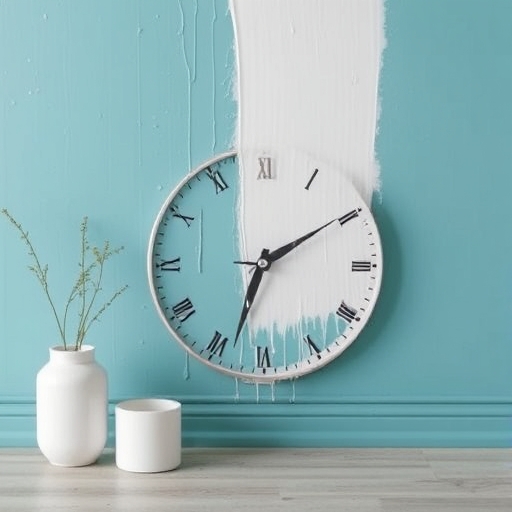How Long to Wait Between Coats of Paint
Painting is one of the most effective ways to refresh and revitalize your space. Whether you are giving your living room a facelift or painting the exterior of your home, knowing how long to wait between coats of paint is crucial for achieving a professional finish. In this article, we will explore the factors that influence drying times, the different types of paint, and best practices to ensure a flawless application.
Understanding Paint Drying Times
Before diving into the specifics of waiting times, it is essential to understand the difference between “drying” and “curing.”
Drying vs. Curing
- Drying: This refers to the process where the paint becomes dry to the touch. This means you can safely handle the surface without leaving fingerprints or smudges.
- Curing: This is the process where the paint fully hardens and reaches its maximum durability. Curing can take days or even weeks, depending on the type of paint and environmental conditions.
- Latex Paint: Typically dries to the touch within 1-2 hours and can be recoated in 4-6 hours.
- Oil-Based Paint: Takes longer, usually 6-8 hours to dry to the touch and 24 hours before recoating.
- Latex Paint:
- Wait 4-6 hours between coats.
- May be recoated sooner in warm, dry conditions.
- Oil-Based Paint:
- Wait at least 24 hours between coats.
- Consider using a fast-drying oil-based paint to shorten wait times.
- Spray Paint:
- Wait 30 minutes before applying a second coat.
- Ensure light coats are applied to avoid runs.
- Chalk Paint:
- Wait about 2 hours between coats for best results.
- Light sanding between coats can improve adhesion.
- Primer:
- Allow 2-4 hours before applying the top coat.
- Ensure the primer is fully dry to prevent issues with the top coat.
- Clean the surface thoroughly to remove dust, grease, and old paint.
- Repair any imperfections, such as cracks or holes, with filler.
- Invest in high-quality brushes, rollers, and trays to ensure even coverage.
- Use painter’s tape to protect edges and create clean lines.
- Apply paint in thin, even layers to promote faster drying and better adhesion.
- Avoid overloading your brush or roller.
- If possible, paint during optimal weather conditions (60-85°F with low humidity).
- Use a dehumidifier or heater if painting in extreme weather.
- Always check the paint can for specific drying and recoating instructions.
- Different brands may have unique formulations that affect drying times.
- Increasing air circulation with fans.
- Using a heat gun or hairdryer on a low setting (be cautious not to overheat).
- Painting in warmer, drier conditions.
- Latex paints may take up to 30 days to fully cure.
- Oil-based paints can take 7-14 days or longer.
Factors Affecting Drying Times
Several factors can influence how long you should wait between coats of paint:
1. Type of Paint: Different types of paint have varying drying times.
2. Temperature and Humidity: Higher temperatures and lower humidity levels can speed up drying times, while cooler temperatures and high humidity can slow them down.
3. Air Circulation: Good ventilation can help paint dry faster. Use fans or open windows to improve air circulation.
4. Thickness of Application: A thicker coat of paint will take longer to dry than a thinner one.
5. Surface Material: The type of surface being painted (wood, drywall, metal) can also affect drying times.
Recommended Waiting Times Between Coats
Here is a simple comparison table summarizing the recommended waiting times between coats for different types of paint:
| Type of Paint | Dry to Touch | Recoat Time |
|---|---|---|
| Latex Paint | 1-2 hours | 4-6 hours |
| Oil-Based Paint | 6-8 hours | 24 hours |
| Spray Paint | 30 minutes | 1-2 hours |
| Chalk Paint | 30 minutes | 2 hours |
| Primer | 1-2 hours | 2-4 hours |
General Guidelines for Different Paints
Best Practices for Painting
To achieve the best results when painting, consider the following best practices:
1. Prepare the Surface
2. Use Quality Tools
3. Apply Thin Coats
4. Monitor Environmental Conditions
5. Follow Manufacturer Instructions
FAQ About Painting Between Coats
How do I know if the paint is dry enough to recoat?
You can perform a simple touch test. If the paint feels dry and does not leave a fingerprint, it is likely ready for a second coat. However, for best results, always refer to the manufacturer’s recommendations.
Can I speed up the drying process?
Yes, you can speed up drying times by:
What happens if I wait too long between coats?
If you wait too long, the first coat may cure completely, making it difficult for the second coat to adhere properly. In such cases, you may need to lightly sand the first coat to create a better surface for adhesion.
Is it necessary to sand between coats?
While not always necessary, sanding between coats can enhance adhesion, especially with glossy finishes. Use fine-grit sandpaper and wipe away dust before applying the next coat.
How long does paint take to cure fully?
Curing times vary based on the type of paint:
Conclusion
Knowing how long to wait between coats of paint is essential for achieving a flawless finish that will last. By considering factors such as the type of paint, environmental conditions, and following best practices, you can ensure your painting project is successful. Remember to always consult the paint manufacturer’s instructions for the most accurate drying and recoating times. Happy painting!

